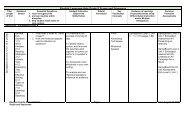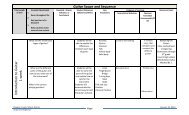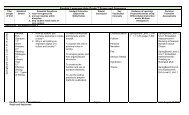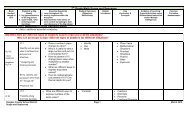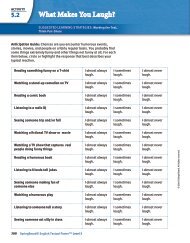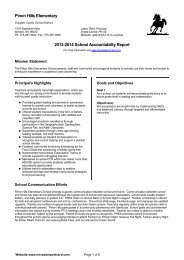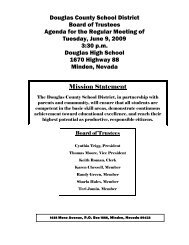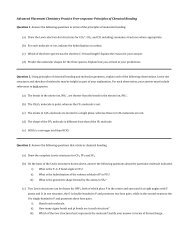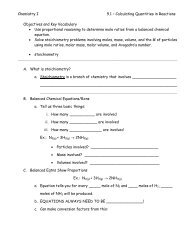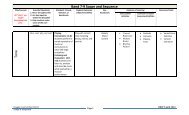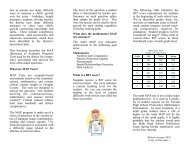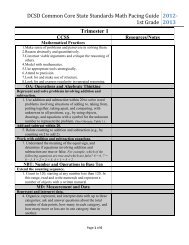DCSD Common Core State Standards Math Pacing Guide 4th Grade
DCSD Common Core State Standards Math Pacing Guide 4th Grade
DCSD Common Core State Standards Math Pacing Guide 4th Grade
Create successful ePaper yourself
Turn your PDF publications into a flip-book with our unique Google optimized e-Paper software.
<strong>DCSD</strong> <strong>Common</strong> <strong>Core</strong> <strong>State</strong> <strong>Standards</strong> <strong>Math</strong> <strong>Pacing</strong> <strong>Guide</strong> <strong>4th</strong><br />
<strong>Grade</strong><br />
2012-<br />
2013<br />
3. Understand a fraction a/b with a > 1 as a sum of fractions 1/b.<br />
a. Understand addition and subtraction of fractions as joining and<br />
separating parts referring to the same whole.<br />
b. Decompose a fraction into a sum of fractions with the same<br />
denominator in more than one way, recording each<br />
decomposition by an equation. Justify decompositions, e.g., by<br />
using a visual fraction model. Examples: 3/8 = 1/8 + 1/8 + 1/8;<br />
3/8 = 1/8 + 2/8 ; 2 1/8 = 1 + 1 + 1/8 = 8/8 + 8/8 + 1/8.<br />
c. Add and subtract mixed numbers with like denominators, e.g.,<br />
by replacing each mixed number with an equivalent fraction,<br />
and/or by using properties of operations and the relationship<br />
between addition and subtraction.<br />
d. Solve word problems involving addition and subtraction of<br />
fractions referring to the same whole and having like<br />
denominators, e.g., by using visual fraction models and<br />
equations to represent the problem.<br />
MD: Measurement and Data<br />
Represent and interpret data.<br />
4. Make a line plot to display a data set of measurements in fractions<br />
of a unit (1/2, 1/4, 1/8). Solve problems involving addition and<br />
subtraction of fractions by using information presented in line<br />
plots. For example, from a line plot find and interpret the<br />
difference in length between the longest and shortest specimens in<br />
an insect collection.<br />
Geometric measurement: understand concepts of angle and<br />
measure angles.<br />
5. Recognize angles as geometric shapes that are formed wherever<br />
two rays share a common endpoint, and understand concepts of<br />
angle measurement:<br />
a. An angle is measured with reference to a circle with its center at<br />
the common endpoint of the rays, by considering the fraction of<br />
the circular arc between the points where the two rays intersect<br />
the circle. An angle that turns through 1/360 of a circle is called<br />
a “one-degree angle,” and can be used to measure angles.<br />
b. An angle that turns through n one-degree angles is said to have<br />
an angle measure of n degrees.<br />
6. Measure angles in whole-number degrees using a protractor.<br />
Sketch angles of specified measure.<br />
G: Geometry<br />
Draw and identify lines and angles, and classify shapes by<br />
properties of their lines and angles.<br />
1. Draw points, lines, line segments, rays, angles (right, acute,<br />
obtuse), and perpendicular and parallel lines. Identify these in twodimensional<br />
figures.<br />
Page 4 of 6



